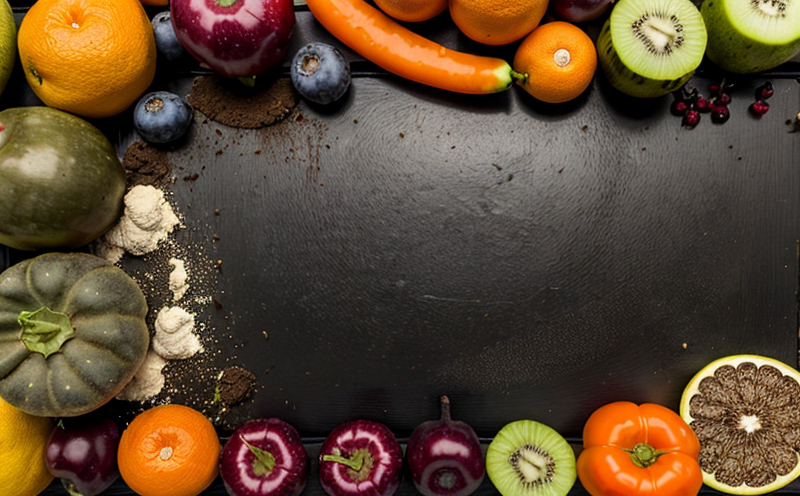FDA Guidance Shelf Life Testing in Fresh Fruits
The FDA's guidance on shelf life testing is crucial for ensuring that fresh fruits are safe and of high quality from the moment they leave the farm to when they reach the consumer. Shelf life testing involves assessing how long a product can be stored under specified conditions without losing its safety or nutritional value. This process is essential in the food and feed sector as it helps ensure compliance with regulatory standards, minimizes waste, and maintains brand reputation.
The FDA's guidance on shelf life testing primarily focuses on two key areas: environmental factors and storage conditions. Environmental factors such as temperature, humidity, and light exposure can significantly impact the freshness and safety of fresh fruits. The appropriate storage conditions vary depending on the type of fruit. For instance, apples have a different ideal temperature range compared to avocados.
The FDA recommends that shelf life testing be conducted at various stages in the supply chain. This includes during post-harvest handling, transportation, and distribution. Post-harvest treatments such as washing, sorting, and packaging can affect the fruit's quality. Transportation conditions like temperature fluctuations or prolonged exposure to light can also influence the shelf life of fresh fruits.
Shelf life testing involves several steps. Firstly, a representative sample is taken from each batch of fruit. This sample must be prepared according to specific guidelines provided by the FDA. Once the samples are prepared, they are subjected to controlled environmental conditions that simulate real-world storage scenarios. The test parameters include temperature, humidity, and exposure time.
During testing, various quality indicators are monitored. These include physical attributes such as color, texture, and appearance; chemical properties like water content and pH levels; and microbiological safety checks. Microbiological safety is particularly important to ensure that the fruits remain safe for consumption throughout their shelf life.
The FDA's guidance emphasizes the importance of accurate data recording and analysis. This includes tracking changes in quality indicators over time and comparing them against established benchmarks. The results of these tests are used to determine the optimal storage conditions and duration for each type of fruit, ensuring that they remain safe and of high quality.
In conclusion, FDA guidance on shelf life testing is a critical component of ensuring food safety and quality in the fresh fruits sector. By following this guidance, companies can maintain compliance with regulatory standards, reduce waste, and enhance consumer satisfaction. This process requires careful planning, accurate sample preparation, controlled environmental conditions, and thorough data analysis.
Scope and Methodology
The FDA's shelf life testing methodology for fresh fruits involves several key steps to ensure accuracy and reliability. The first step is selecting a representative sample from each batch of fruit. This ensures that the test results are applicable to the entire batch.
- Sample selection should be done randomly to avoid bias.
- The number of samples taken depends on the size of the batch but should be sufficient for accurate testing.
- Once selected, the samples must be prepared according to FDA guidelines. This includes washing, sorting, and packaging them in a controlled environment.
The next step is exposing the samples to controlled environmental conditions that simulate real-world storage scenarios. These conditions include temperature, humidity, and exposure time. The FDA provides specific parameters for each type of fruit based on its ideal storage conditions.
During testing, various quality indicators are monitored using appropriate instruments and techniques. Physical attributes such as color, texture, and appearance are assessed visually or with the aid of specialized equipment. Chemical properties like water content and pH levels are measured using spectrophotometers or other analytical tools. Microbiological safety checks involve culturing samples to ensure no harmful bacteria or pathogens are present.
The data collected during testing is analyzed carefully to track changes in quality indicators over time. This helps determine the optimal storage conditions and duration for each type of fruit, ensuring they remain safe and of high quality throughout their shelf life.
Industry Applications
- Farmers and producers can use FDA guidance to optimize post-harvest handling practices.
- Distributors can ensure consistent product quality by adhering to recommended storage conditions.
- Retailers can extend the freshness period, leading to increased sales and customer satisfaction.
- Manufacturers of fruit-based products can enhance the safety and quality of their final goods.
Why Choose This Test
Choosing FDA guidance shelf life testing in fresh fruits offers numerous benefits. Firstly, it ensures compliance with regulatory standards set by the FDA, which is essential for maintaining a good reputation and avoiding legal issues. Secondly, this test helps minimize waste by identifying the optimal storage conditions and duration for each type of fruit. This allows companies to maximize their inventory turnover while reducing spoilage.
Furthermore, shelf life testing enhances product quality and safety, ensuring that consumers receive fresh, safe fruits. By adhering to FDA guidelines, companies can build trust with their customers, leading to increased loyalty and repeat business. Additionally, this test aids in the development of new products by providing valuable insights into how different storage conditions affect fruit quality.
Finally, shelf life testing supports sustainable practices by reducing waste and optimizing resource use. By minimizing spoilage, companies can reduce their environmental impact while also lowering costs associated with waste disposal.





